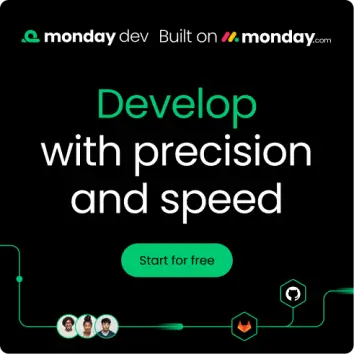In modern project management, teams face the challenge of balancing predictable delivery with the flexibility to adapt when priorities shift. Scrum and PMP represent two distinct approaches to meeting this challenge, each with its own strengths, structures, and applications.
This guide compares Scrum and PMP in depth, covering their philosophies, project frameworks, certification paths, and career impact. It also highlights how each approach manages planning, change, and collaboration, giving you the clarity to decide which best fits your team’s needs.
For leaders building high-performing teams, understanding both methods is critical. Studies show employees who understand how success is measured are twice as likely to feel motivated. Whether you choose the structured control of PMP or the adaptive rhythm of Scrum, the right framework helps reduce backlogs, improve visibility, and deliver results faster.
Key takeaways
This guide offers several critical insights for leaders deciding between PMP and Scrum. Understanding these key points will help you align your methodology with your project type, team structure, and career goals.
- Both certifications boost your career: PMP opens doors to senior leadership roles, while CSM leads to Agile coaching and product management opportunities.
- Getting both certifications makes you more valuable: dual certification lets you bridge traditional and Agile worlds during digital transformations.
- monday dev adapts to any methodology: switch between Gantt charts for PMP projects and sprint boards for Scrum teams — all in one flexible platform.
- Start with what matches your current role: get PMP if you manage traditional projects now, or CSM if you work with Agile teams.
What is the difference between PMP and Scrum?
PMP is a traditional project management approach that uses detailed planning and sequential phases. Scrum is an Agile framework that works in short cycles called sprints with continuous adaptation.
Think of PMP like building a house with complete blueprints before starting construction. Scrum is more like developing a mobile app where you release updates every few weeks based on user feedback, a prime example of Agile project management in action.
What is PMP?
PMP stands for Project Management Professional — it’s both a certification and a way of managing projects. This approach comes from the Project Management Institute (PMI) and follows their PMBOK Guide.
When you use PMP, you plan everything upfront. You define your scope, create detailed schedules, and document every process before starting work. Changes go through formal approval processes.
The PMP approach is defined by its structured and predictive nature, which sets it apart from Agile frameworks. These core characteristics ensure control and predictability from start to finish.
- Sequential phases: projects move through initiation, planning, execution, monitoring, and closing in order.
- Centralized control: the project manager makes key decisions and directs team activities.
- Heavy documentation: you create detailed plans, risk registers, and status reports throughout.
- Fixed constraints: scope, timeline, and budget are set at the beginning.
What is Scrum?
Scrum is a framework within the Agile methodology that helps teams deliver work in short, structured cycles called sprints. Each sprint typically lasts between one and four weeks and ends with a working product increment that adds value for stakeholders.
Unlike traditional project management, Scrum distributes responsibilities across three core roles. The product owner defines what needs to be built, the scrum master ensures Scrum practices are followed, and the development team determines how the work gets done.
Key elements that define Scrum:
- Sprint cycles: work happens in fixed timeboxes with clear start and end dates.
- Self-organizing teams: the team decides how to accomplish their goals.
- Regular ceremonies: daily standups, sprint planning, reviews, and retrospectives keep everyone aligned.
- Continuous delivery: working increments are shipped at the end of every sprint.
5 key differences at a glance
Scrum and PMP take very different approaches to planning, structure, and delivery. PMP emphasizes upfront control and detailed oversight, while Scrum prioritizes adaptability and iterative progress. Looking at these distinctions side by side makes it easier to see which framework aligns with your team’s needs and project goals.
| Aspect | PMP | Scrum |
|---|---|---|
| Planning approach | Complete planning before execution | Plan one sprint at a time |
| Project structure | Linear phases from start to finish | Repeating sprint cycles |
| Change management | Formal change requests required | Changes welcomed each sprint |
| Team dynamics | Project manager directs work | Team self-organizes work |
| Success measurement | Did you follow the plan? | Did you deliver value? |
PMP vs Scrum Master certification comparison
PMP and Scrum Master certifications both boost careers in project management, but they serve different needs. PMP fits structured, traditional projects, while Scrum Master prepares you to guide Agile teams. Understanding the differences in cost, requirements, and career impact helps you choose the right path.
Certification costs and requirements
The path to certification varies widely between PMP and CSM. PMP demands significant professional experience and a larger upfront investment, while CSM is designed to be more accessible and quicker to achieve.
PMP certification requires a higher level of preparation:
- Experience: 36 months of project management with a bachelor’s degree, or 60 months without.
- Education: 35 hours of formal project management training.
- Exam: 180 questions in just under 4 hours.
- Cost: $405 for PMI members or $555 for non-members.
CSM certification offers a faster, more practical route:
- Experience: none required.
- Training: 2-day course from a Certified Scrum Trainer.
- Exam: 50-question online assessment, usually taken right after training.
- Cost: $1,000–$1,500 including the course and certification.
Exam prerequisites and study time
It is worth noting as we’ve touched on above that PMP requires serious preparation. Plan for three to six months of study covering ten knowledge areas and five process groups. Most successful candidates invest 100-200 hours in exam prep.
CSM is more straightforward. The required 16-hour training course covers everything you need. You can take the assessment right after class while the material is fresh.
Which certification is right for you?
Choose PMP when your organization values traditional project management. This fits well in construction, healthcare, government, or any industry with strict compliance requirements.
PMP makes sense if you manage projects with fixed requirements, formal contracts, or regulatory oversight. The certification carries weight in organizations that follow waterfall methodologies.
Choose CSM when you work in software development or digital product teams. This certification suits environments where requirements change frequently and customer feedback drives decisions.
CSM works well if your organization is adopting Agile practices or if you want to facilitate team collaboration rather than direct activities.
Which pays more: PMP or Scrum Master?
Earning potential varies widely between PMP and Scrum Master certifications, and it depends on more than the credential alone. Factors like industry, company size, geographic location, and years of experience all shape compensation.
Still, clear trends emerge: PMP tends to deliver higher base salaries, while Scrum Master roles offer strong growth in technology-driven fields.
Average salaries by experience level
Salary trends differ between PMP holders and Scrum masters, but experience level plays a major role in outcomes.
- PMP-certified professionals: earn about 29% more than their non-certified peers, according to the Project Management Institute. These roles often involve managing larger budgets, complex initiatives, and cross-functional teams.
- Scrum masters in technology companies: can match or even surpass PMP salaries, as demand for Agile expertise continues to grow. Compensation is especially strong when Scrum knowledge is paired with technical skills.
- Entry-level roles: tend to favor CSM certification, since you can get certified without prior experience.
- Mid-career professionals: often see PMP open doors to senior management positions, with corresponding increases in salary and scope of responsibility.
Career growth trajectories
PMP certification creates paths to senior leadership. A PMP certification often serves as a launchpad for strategic leadership positions that oversee broad organizational initiatives. These roles typically involve managing larger budgets, more complex programs, and entire project portfolios.
- Program manager: oversee multiple related projects.
- Portfolio Manager: manage collections of programs and projects.
- PMO Director: lead the project management office.
Scrum Master certification leads to different opportunities:
- Agile Coach: guide multiple teams in Agile adoption.
- Product Owner: define product vision and priorities.
- Engineering Manager: lead technical teams using Agile practices.
Job market demand comparison
PMP remains valuable across traditional industries. Construction companies need PMP-certified managers for infrastructure projects. Healthcare organizations require them for system implementations. Government contracts often specify PMP certification, so it’s worth considering Scrum vs Waterfall if your environment leans toward more sequential processes.
Scrum master demand concentrates in technology but spreads to other sectors too. Financial services adopt Scrum for digital transformation. Retail companies also require Scrum masters for e-commerce development. Even marketing teams embrace Scrum for campaign management.
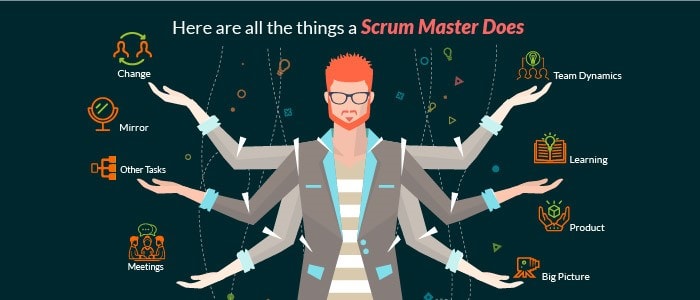
PMP vs Scrum: methodology differences
PMP and Scrum take very different approaches to organizing and delivering work. PMP emphasizes structure and documentation across defined phases, while Scrum focuses on short cycles and continuous feedback. Comparing these approaches helps you see which fits your project’s needs.
How PMBOK framework works
PMBOK organizes project management into five process groups that flow sequentially. Initiating defines the project. Planning creates detailed roadmaps. Executing does the work. Monitoring tracks progress. Closing wraps everything up.
These processes touch 10 knowledge areas like scope, schedule, cost, and risk management. You create specific documents for each area — project charters, work breakdown structures, risk registers, and more.
monday dev supports PMBOK practices with Gantt charts for scheduling, customizable dashboards for monitoring, and comprehensive reporting features that satisfy stakeholder requirements.
How Scrum framework works
Scrum creates a rhythm through repeated events. Sprint planning kicks off each cycle by selecting work from the Product Backlog. Daily Scrum meetings keep the team synchronized. Sprint Reviews demonstrate completed work. Teams also measure performance through Scrum metrics, while Sprint Retrospectives improve the process.
The Product owner maintains a prioritized list of features. The team pulls work they can complete in one Scrum sprint. They deliver working software at the end, gather feedback, and start again.
Project management style comparison
PMP and Scrum shape teamwork in very different ways, from who makes decisions to how risks and quality are managed. The table below highlights the key contrasts:
| Aspect | PMP (PMBOK) | Scrum |
|---|---|---|
| Decision authority | Project manager decides | Team decides together |
| Risk handling | Identify all risks upfront | Address risks as they appear |
| Quality control | Formal testing phases | Quality built into each sprint |
| Stakeholder interaction | Scheduled status meetings | Regular sprint reviews |
When to use PMP vs Scrum
The choice between PMP and Scrum isn’t about which method is “better,” but about which one fits your project environment. Factors like project scope, regulatory needs, and pace of change determine which framework gives your team the best chance of success. The following scenarios highlight when each approach works best.
Best scenarios for PMP
PMP excels when requirements are clear and unlikely to change. Building a bridge requires detailed engineering plans — you can’t iterate on the foundation after pouring concrete.
Regulatory projects benefit from PMP’s documentation. FDA submissions, financial audits, and safety certifications need comprehensive paper trails that PMP naturally creates.
Fixed-price contracts work well with PMP. When you bid on government projects or sign vendor agreements, stakeholders expect detailed plans and formal change management.
Best scenarios for Scrum
Scrum shines when you’re discovering requirements through customer feedback. Mobile apps, websites, and software products evolve based on user behavior and market response.
Innovation projects suit Scrum’s iterative approach. When you’re exploring new technologies or business models, short experiments with quick pivots help find the right solution.
Competitive markets demand Scrum’s speed. If competitors release features monthly while you plan annually, you’ll fall behind regardless of plan quality.
Industry-specific guidelines
Different industries have natural preferences based on their operating constraints:
Traditional industries favoring PMP:
- construction: building codes and safety requirements demand detailed planning.
- Healthcare: patient safety and regulatory compliance require extensive documentation.
- Manufacturing: production lines need predictable schedules and resource allocation.
Industries embracing Scrum:
- Software development: rapid technology changes make long-term planning obsolete.
- Digital marketing: campaign performance data drives constant optimization.
- Startups: limited resources require quick pivots based on market feedback.
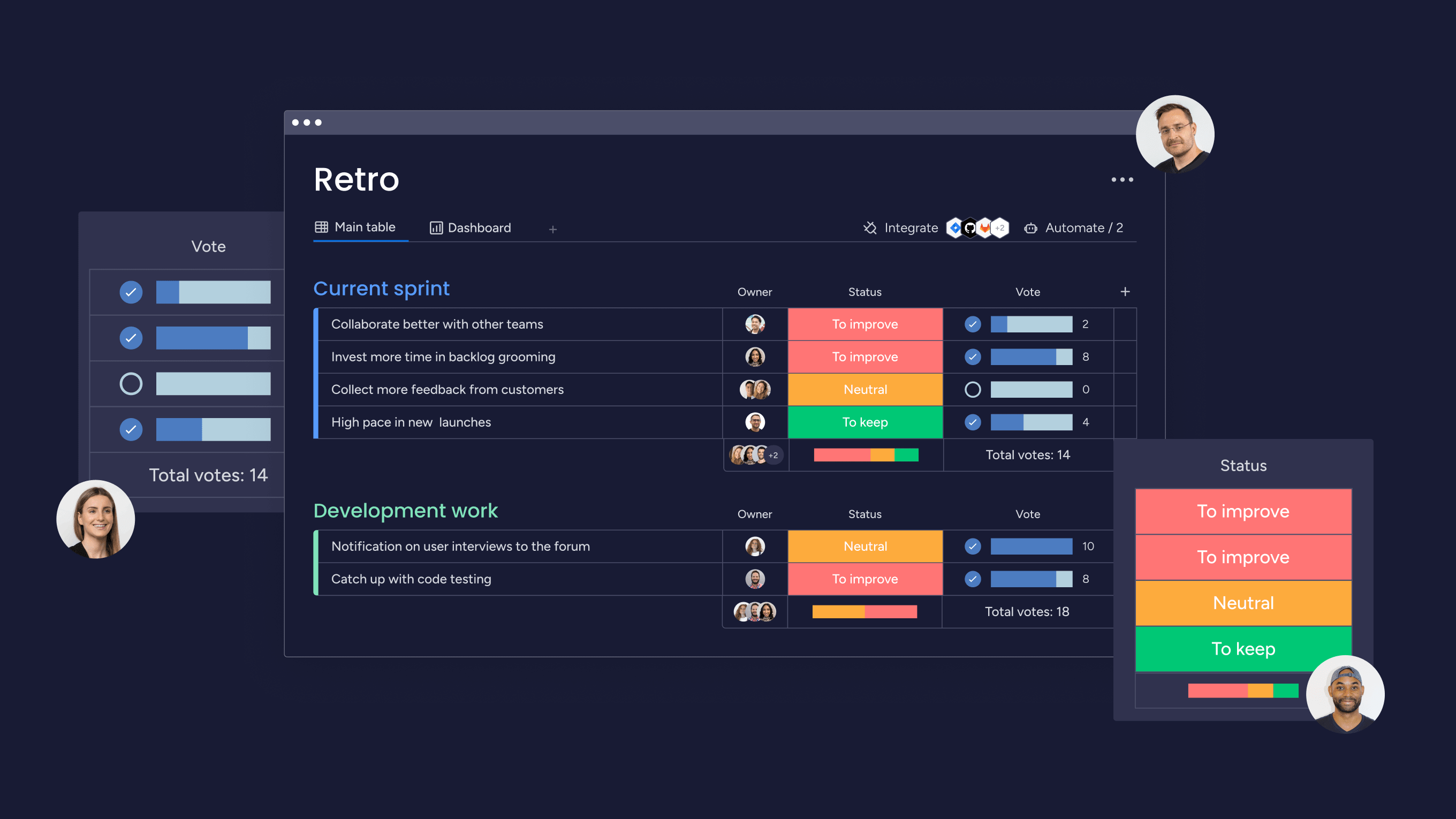
Can you have both PMP and Scrum certifications?
Many professionals pursue both certifications to maximize career flexibility. This combination proves valuable as organizations blend traditional and Agile approaches.
Benefits of dual certification
Earning both PMP and Scrum Master certifications gives you flexibility and credibility across different types of projects. Key benefits include:
- Broader career options: lead traditional infrastructure projects while also guiding Agile software teams.
- High organizational value: bridge the gap during digital transformations by supporting Agile adoption without losing needed structure.
- Better decision-making: recognize when detailed planning drives success and when Agile flexibility is the smarter choice.
This dual perspective makes you more adaptable and positions you as a leader who can thrive in any environment.
How to pursue both paths
Start with the certification that matches your current role. If you manage traditional projects, get PMP first to formalize your experience. Add CSM later to expand into Agile.
Working in an Agile environment? Get CSM immediately to improve your daily work. Pursue PMP later to understand enterprise project management and expand career options.
Consider timing carefully. PMP requires extensive experience, so early-career professionals might start with CSM. Mid-career managers often have the experience for PMP and add CSM for modern practices.
Transitioning from traditional PM to Scrum
Moving from PMP to Scrum requires a significant mindset shift, and with 60% of employees believing more effective training would improve change management, it’s a transition that needs strong support. Instead of controlling projects, you’ll facilitate teams. Rather than enforcing plans, you’ll embrace change.
5 steps to make the switch
Successfully transitioning requires deliberate practice and patience:
- Learn Agile principles: read the Agile Manifesto and understand why it values individuals over processes, working software over documentation.
- Get certified: pursue CSM or Professional Scrum master certification to demonstrate commitment and learn from experienced trainers
- Practice facilitation: develop skills in coaching, active listening, and conflict resolution instead of directive management.
- Join Agile teams: volunteer for Scrum projects, even in supporting roles, to experience daily stand-ups and sprint rhythms.
- Embrace continuous learning: join local Agile meetups, follow thought leaders, and practice new techniques regularly.
Common challenges and solutions
Shifting from traditional project management to Scrum can feel uncomfortable at first. Two common challenges pop up often but there are clear solutions:
- Reduced control: project managers often feel uneasy moving from assigning tasks to letting teams self-organize.
- Solution: focus on removing obstacles instead of managing work. Ask “What’s blocking you?” rather than “What’s your status?” to empower the team.
- Faster pace: short planning cycles and daily stand-ups may seem inefficient compared to detailed upfront planning.
- Solution: trust the process. Frequent planning reduces risk, and daily synchronization helps spot issues before they become major problems.
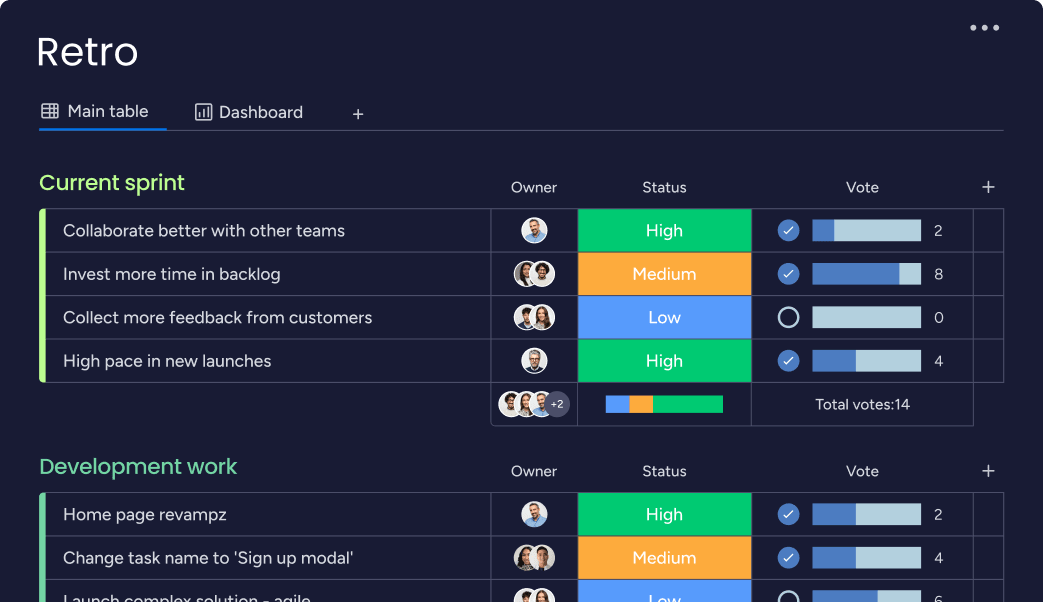
Managing both methodologies with monday dev
Modern organizations rarely use pure PMP or pure Scrum. In fact, recent statistics show that hybrid approaches are supplanting purely Agile projects, with most organizations blending methods based on project needs.
monday dev enables this flexibility through adaptable features that support both frameworks simultaneously.
Flexible workflows for any framework
monday dev adapts to your methodology, giving teams the freedom to run projects their way while staying aligned on one platform.
- Plan traditionally: build detailed project plans with dependencies, milestones, Gantt charts, and workload views to support PMP-style management.
- Work iteratively: switch to a Scrum board
for sprint planning, backlog prioritization, story points, and automated burndown charts that track velocity in real time.
- Support hybrid models: combine both methods within the same project — for example, manage infrastructure with milestone tracking while running feature development in sprints.
- Tailor to your process: capture exactly the right inputs with Dynamic Forms, and use customizable boards, columns, and automations to shape workflows to your team’s needs.
Real-time visibility across teams
Visibility matters regardless of methodology. monday dev provides customizable dashboards with over 20 widgets that speak to different audiences. Executives see portfolio progress through high-level roadmap widgets. Scrum Masters track sprint velocity with burndown charts and capacity planning widgets. Stakeholders monitor milestone achievement through timeline and status widgets.
Real-time updates keep everyone informed. When developers complete stories, the sprint board updates automatically through status column automations. When milestones shift, Gantt charts reflect changes immediately with timeline dependencies maintained. This transparency builds trust across methodologies with automated notifications keeping stakeholders in the loop.
Custom views let each role see relevant information. Product Owners focus on backlog prioritization using priority columns and custom filters. Project managers monitor resource allocation through workload views and timeline widgets. Teams track their daily progress with personalized My Work dashboards. Same data, different perspectives: all configurable without code.
Seamless integration with your processes
Connect with platforms you already use through 200+ out-of-the-box integrations. With monday dev you can sync with GitHub for code updates that automatically update task statuses. Teams can also link Slack for team communication and connect Figma for design collaboration with embedded previews. Finally, monday dev also allows you to Integrate with Jira, Azure DevOps, or GitLab to maintain continuity with existing tools.
These integrations work regardless of methodology. PMP projects can track document approvals through DocuSign integration and automate status updates. Scrum teams can automate deployment notifications through CI/CD integrations with Jenkins or CircleCI. The platform’s custom automation recipes adapt to your existing workflows rather than forcing changes, with an open API for building custom connections to any service.
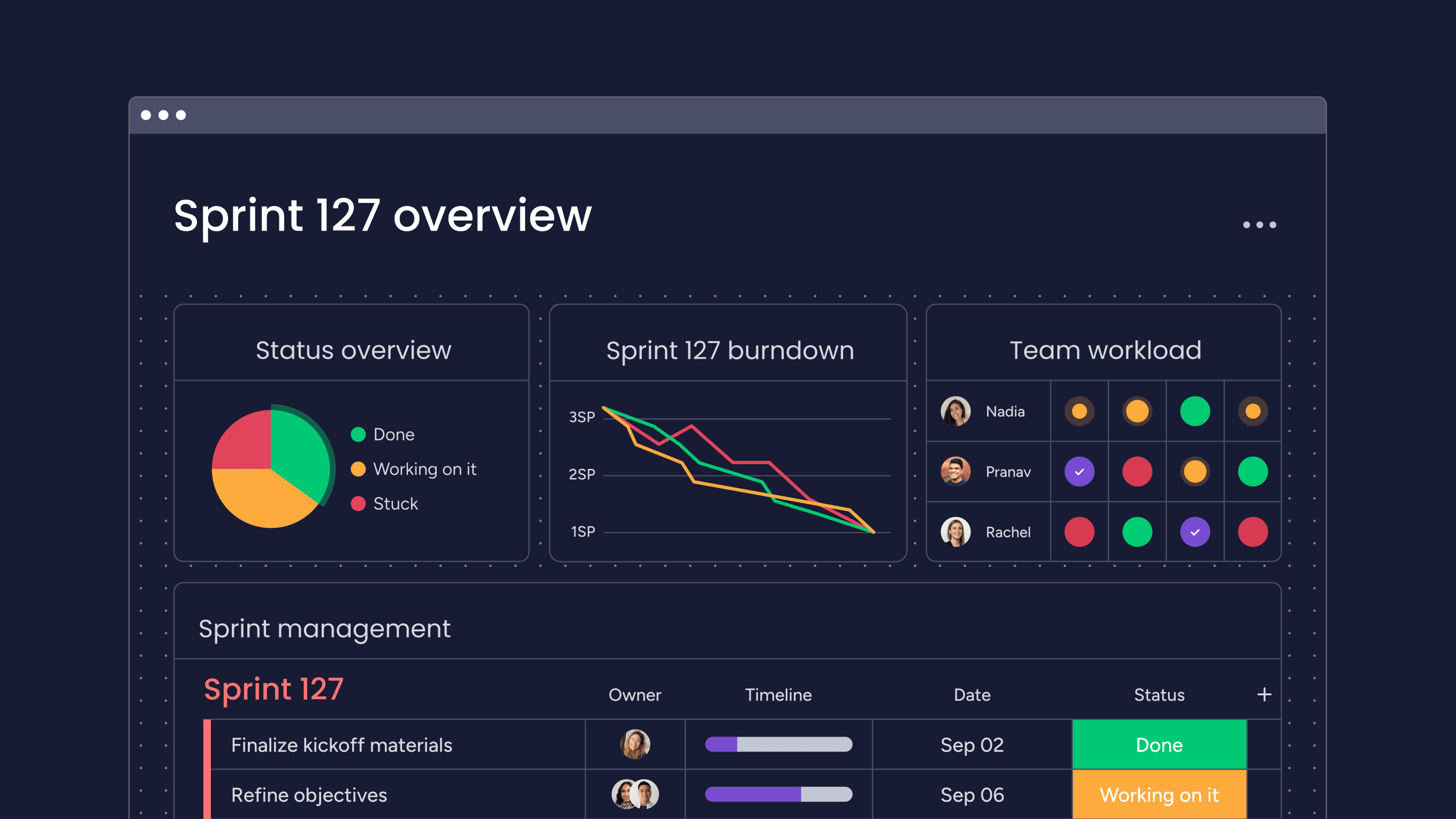
Why modern development teams choose adaptive approaches
Development today moves too fast for one rigid framework. Teams need the structure to plan strategically and the agility to adapt when requirements shift.
- Where PMP falls short: detailed documentation and long planning cycles quickly become outdated in fast-moving markets.
- Where Scrum falls short: lightweight processes sometimes lack the roadmaps, predictability, and compliance documentation enterprises need.
- Why teams blend both: using PMP for strategic alignment and Scrum for iterative execution creates a balance of predictability and flexibility.
monday dev supports this adaptive approach by:
- Maintaining long-term roadmaps alongside sprint-level execution.
- Enabling documentation where it adds value without creating overhead.
- Aligning stakeholders with clear plans while leaving room for innovation.
With the right balance, teams can move fast, stay compliant, and keep stakeholders confident — all within a single, flexible system.
Frequently asked questions
Is Scrum Master higher than project manager?
A Scrum Master is not higher than a project manager — they are different roles with distinct responsibilities. The Scrum Master facilitates Agile practices, supports the team, and removes obstacles. The project manager focuses on scope, timelines, budgets, and stakeholder alignment. Both operate at similar organizational levels but serve different purposes.
Which certification should I get first, PMP or CSM?
When deciding whether to get PMP or CSM first, you should choose the one that matches your current role for immediate application. Choose PMP first if you work in traditional project environments with formal planning requirements, and choose CSM first if you work in software development or Agile teams.
Do companies prefer PMP or CSM certification?
Company preference depends on industry and methodology. Traditional industries like construction and healthcare prefer PMP for its comprehensive approach. Technology companies and startups prefer CSM for Agile expertise. Many organizations value both certifications.
How long does each certification last before renewal?
PMP certification lasts three years and requires 60 Professional Development Units (PDUs) for renewal. CSM certification lasts two years and requires 20 Scrum Education Units (SEUs) plus a renewal fee. Both require ongoing education to stay current.
Can PMP holders become effective Scrum Masters?
PMP holders can become effective Scrum masters by shifting from directive to facilitative leadership. Success requires embracing team self-organization, welcoming change, and focusing on removing obstacles rather than managing tasks. Many excellent Scrum masters bring valuable PMP experience.
What is the difference between PMI-ACP and CSM certification?
PMI-ACP covers multiple Agile methods including Scrum, Kanban, and Lean, requiring 2,000 hours of Agile experience. If you're curious, it can be helpful to compare Lean vs Scrum or Kanban vs Scrum to see how these frameworks stack up against PMP. CSM focuses specifically on Scrum with no experience required. PMI-ACP suits professionals using various Agile approaches, while CSM provides deep Scrum expertise.
 Get started
Get started 


